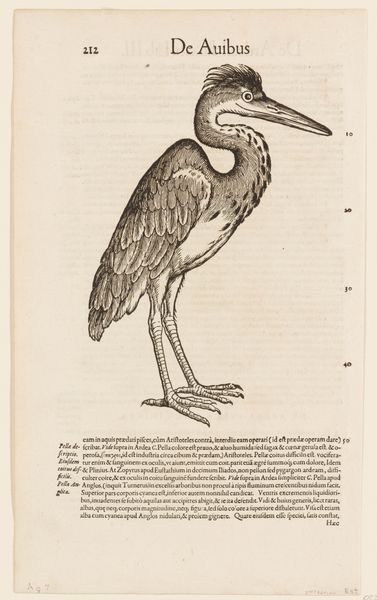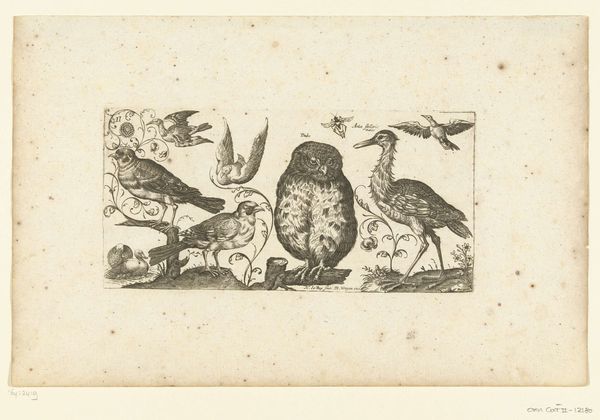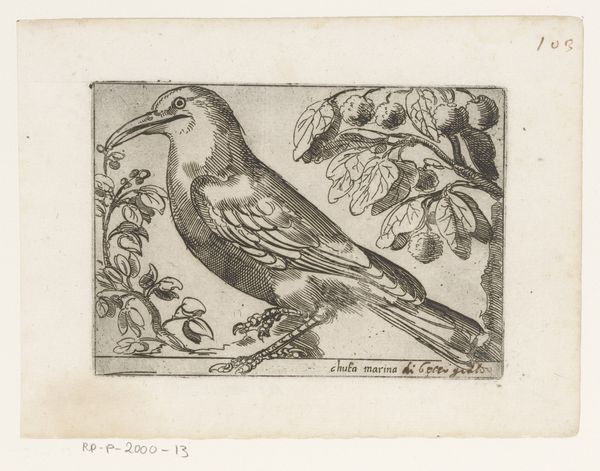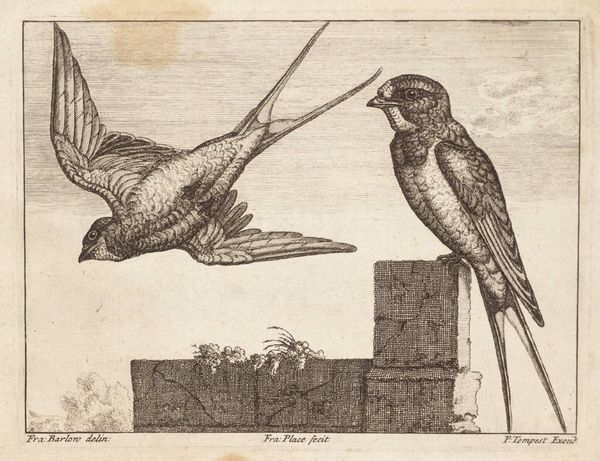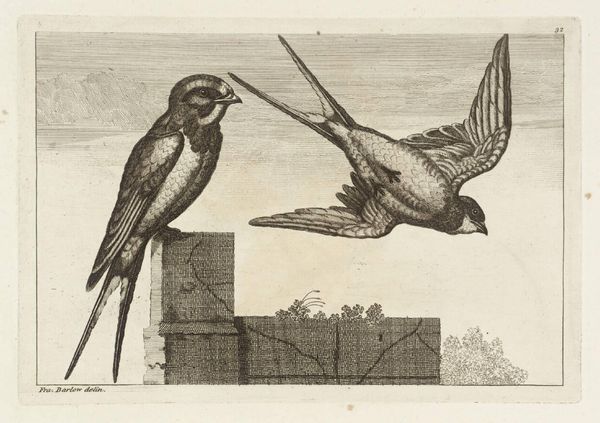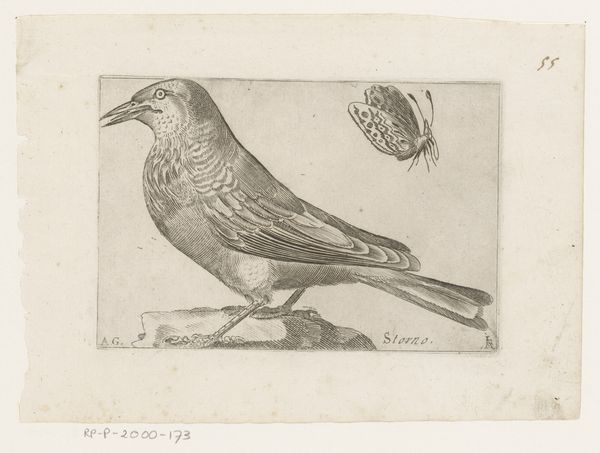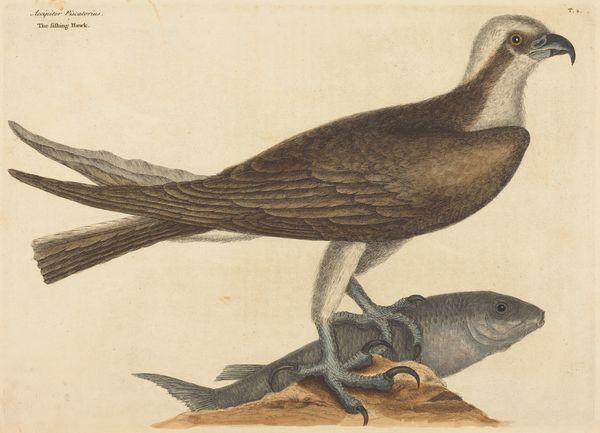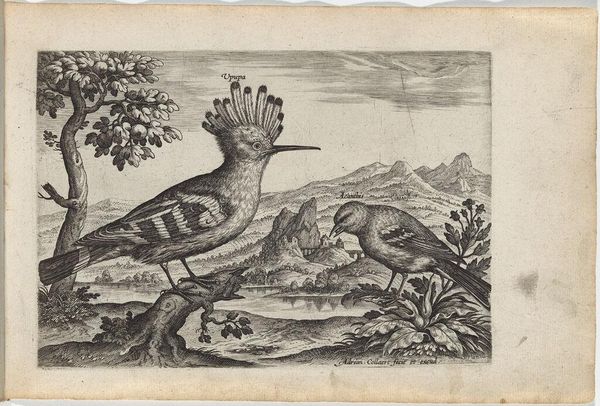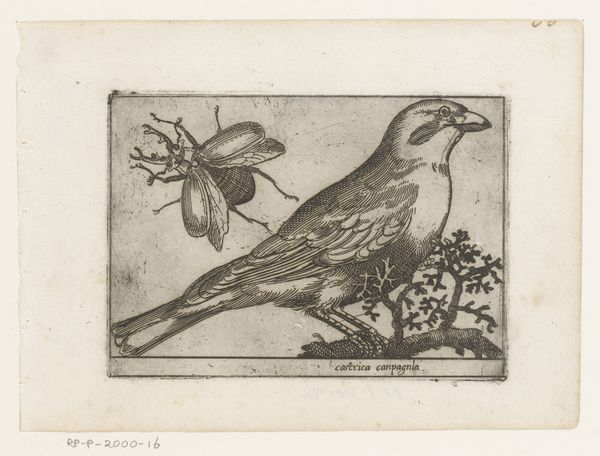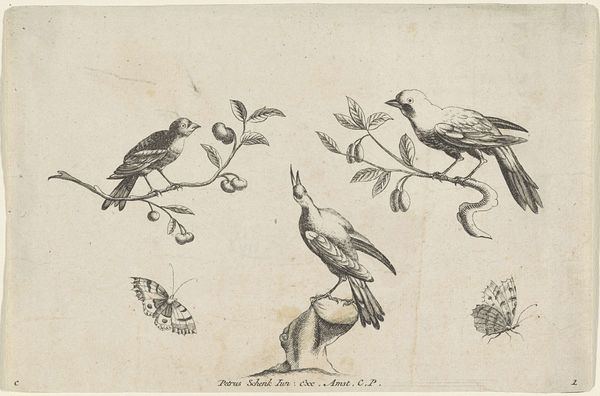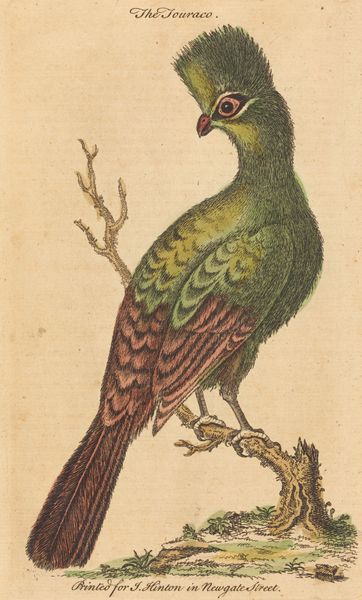
print, engraving
# print
#
figuration
#
northern-renaissance
#
engraving
Dimensions: 12 x 7 in. (30.48 x 17.78 cm) (image)
Copyright: Public Domain
This is Conrad Gesner's "Hoopoe Bird," a woodcut made around 1555, now at the Minneapolis Institute of Art. Look closely at the Hoopoe's crown—a resplendent crest of feathers. Throughout history, this crest has carried a complex, oscillating symbolism, a visual embodiment of humanity's ambivalence. In some cultures, the Hoopoe is revered, linked to wisdom, royalty, and prophecy, celebrated as a guide leading souls to paradise. Yet, turn the coin, and we find the bird associated with uncleanliness and theft, a harbinger of ill omen. Consider its echo in ancient Egyptian art, where the Hoopoe was sacred, or in Persian lore, where it guided souls, contrasting starkly with its portrayal in some European folklore as a symbol of vanity. These shifting attributions speak to our collective psyche, where beauty and the grotesque, the sacred and the profane, are eternally intertwined. It reflects how symbols evolve, shaped by cultural anxieties. The Hoopoe, therefore, isn't just a bird; it's a mirror reflecting our deepest fears and aspirations.
Comments
No comments
Be the first to comment and join the conversation on the ultimate creative platform.
